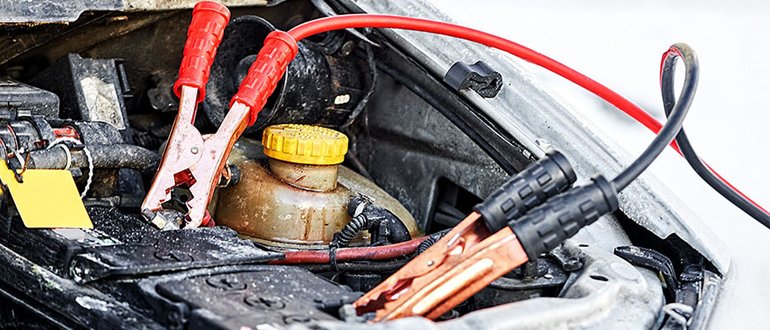Quite often, a situation arises when it is urgent to restore the energy of a discharged battery. Most often this occurs when parking a car on the street during frost. It is known that with decreasing temperature of the electrolyte, the battery capacity decreases. Therefore, the question arises whether it is possible to charge the battery in cold weather, at freezing temperatures.
When you can and cannot be charged in the cold
For a working battery there are no restrictions on the lower temperature value. When charging, the following factors should be considered:
- Electrolyte density measurements are made taking into account the correction coefficient according to the table data;
- Charging current leakage may occur through a wet housing due to condensation.
Correction to hydrometer readings depending on the electrolyte temperature:
| The temperature of the electrolyte when measuring density, ° C | Correction to hydrometer readings, g / cm³ |
|---|---|
| -55 to -41 | -0,05 |
| from -40 to -26 | -0,04 |
| from -25 to -11 | -0,03 |
| from -10 to +4 | -0,02 |
| from +5 to +19 | -0,01 |
If the battery has obvious signs of a malfunction, such as a low electrolyte density, then charging the battery of a car that has stood on the street for a long time can lead to complete inoperability.
This occurs due to the following reasons:
- Low electrolyte density causes ice to form in the battery.
- Water at a negative temperature turns into ice with a simultaneous increase in the occupied volume, which destructively affects the plates and the casing.
- During charging, the temperature rises and the electrolyte mixes, and since there are frozen areas, these processes occur unevenly in the battery volume.
- There is an accelerated destruction of the electrodes.
Important! Completely frozen electrolyte can cause a short circuit inside the battery.
How to charge a frozen battery
If, after storing the battery on the balcony or in the garage, the electrolyte freezes in it, then in no case should you begin to charge it. You must wait until the ice inside has completely melted. Given the large mass of the device, the time can be several hours.
Only, making sure that there is no ice inside, you can start charging with a small current. Thus, the temperature inside will rise slowly and there will be no destruction of the plates. Only after some time, it is possible to smoothly, in several stages, raise the charging current to the nominal level.
To prevent the battery from freezing, you need to recharge it regularly. When the car is moving in the winter, the charge from the on-board network may be incomplete, as part of the generator’s energy is taken by powerful consumers - heating of windows and seats, headlights, heater.
If we add to this an initially low electrolyte density, then the probability of freezing during prolonged parking in the cold increases significantly.
When operating the car in severe frosts, you can slightly increase the density of the electrolyte. Approximate data on the electrolyte densities of a fully charged battery depending on the region are given below:
- Far North 29 g / cm3;
- North 28 g / cm3;
- Central zone 27 g / cm3;
- South 26 g / cm3.
Important! The density values shown are for a fully charged battery. For a discharged one, these values will be 0.02 ... 0.03 less.
Increasing the density is done by adding a correction electrolyte or sulfuric acid. To prevent the overall electrolyte level from rising, it is necessary to remove part of the electrolyte from the cans before topping up.







